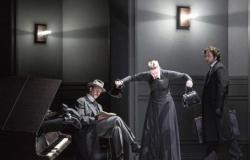Author Patricia Snel describes the suffering in the children’s colony of the Society of Benevolence in the historical novel ‘The Foundling of Veenhuizen’. Karel, his sister Lize and girlfriend Neeltje make plans to escape the harsh regime.
The Society of Benevolence was born from good intentions, but the banishment of city orphans to the children’s colony in Veenhuizen turned out disastrous for many girls and boys. Thousands of children have died alone from infectious diseases and been buried anonymously.
The telling figures: one million Dutch people are descendants of someone from one of the seven Colonies of Benevolence, the 19th-century social experiment in Drenthe. Yet only 8 percent know the story of the 8,600 orphans and foundlings who were sent to Veenhuizen from all over the country.
The story of the beggars, vagrants and underprivileged families who were brought to Drenthe on a large scale to become ‘civilized people’ is widely known, partly thanks to the book The pauper’s paradise by Suzanna Jansen. This does not apply to the fate of orphans who previously stayed in Veenhuizen from 1824 to 1859.
Patricia Snel (Gouda, 1967), who monthly in Drenthe refuels from life on her houseboat in Amsterdam, also only heard the story of the children’s colony from actor Daan Schuurmans during a podwalk about Veenhuizen from the TV program The story of the Netherlands .
The Slokkert
„ I then realized that during my regular walking route via the valley from De Slokkert to the Fourth Institute, I walked past the lawn with the thousands of anonymously buried children. To the friend I was walking with, I immediately said: This is a book. I started the research that same afternoon.”
On paper, the idea behind the so-called Society of Benevolence seemed genuine. The orphanages were overcrowded. In Veenhuizen the children had to work – boys in the fields, girls in the household or in the textile factory – but they also received education.
The air was much fresher than in the city with open sewers, polluted canals and filth in the alleys. But many of the thousands of orphans housed have probably not experienced the village as a warm home.
Snel, who previously wrote thrillers, came across The orphan of Amsterdam in which Karel Möller had written down his memoirs. He ended up with his sister Lize from Amsterdam on a barge to Veenhuizen after their mother died and their father was admitted to an insane asylum with a broken heart.
Escape plans
There was a harsh regime of discipline and discipline in the children’s colony, the writer read in Möller’s memoirs. In her novel The Foundling of Veenhuizen Karel and his sister Lize make a cautious friendship with the hardened foundling Neeltje. Together they make plans to escape.
“Within the historical context, I shaped the story to my liking, like a connect-the-dots drawing,” explains Patricia Snel. She wrote with anger about the regents, with sympathy for a few such as the mayor who did care about the children and with great compassion for the children themselves.
“My heart especially goes out to the character Neeltje, she symbolizes all foundlings. At least the orphans had had parents for a while, the foundlings grew up completely miserable.”
In Snel’s book, a woman leaves her baby on the doctor’s doorstep, with a heartbreaking explanation: ‘Not out of luxury, but out of poverty. (…) Remain mother of the child until death’. Snel discovered a note with almost this text in a book about the extreme poverty in the Netherlands at the time, after the departure of Napoleon.
The story of 9-year-old orphan Maria Maters who had to leave the pastor’s family in which she had been lovingly welcomed for Veenhuizen was also impressive. ‘Graceful’ girls became victims of sexual abuse and were denounced as ‘maniac’ in a single lawsuit.
Then there were the very unsanitary conditions in the children’s colony. “They slept in hammocks with barrels underneath in which they had to relieve themselves. There was no ventilation and you can imagine the enormous stench. They weren’t wearing underpants.”
“Eye infections were treated experimentally, such as with mercury chloride, which burned so much that it made the children virtually blind. Many died of infectious diseases such as scabies, dysentery and cholera. There were two towels for eighty children.” Lize is one of the 2,155 children who succumbed and was driven to a mass grave on a corpse cart.
Third Asylum
For seven months, until January this year, Snel wrote the story in isolation in the old spinning house at the former Third Asylum that General Johannes van den Bosch had built in Veenhuizen in 1823 to accommodate vagrants and orphans. The former workshop is now rented out. “On one of my last days there, a woman from the village knocked on my door. She told me that she is psychic and that there was a girl in the apartment next to me. “She wants to go to the light and her name is Lize,” she said. Goosebumps!”
The writer regularly lights a candle for the orphans at the weeping beech on the lawn (‘actually a mass grave’). “With my book I want to give a face to all these abandoned children of whom there are no images and of whom there are hardly any memories. Hopefully their previously unheard stories will touch the hearts of readers.” Snel is concerned about the current increasing poverty in the Netherlands. “The foundling rooms are even back.”
Partly thanks to Snel’s efforts, a special place is being reserved for the history of the children’s colony in the Prison Museum in Veenhuizen. She also wants to give lectures at schools and libraries and organize walks in the Drenthe village around this theme. “I hope to find relatives of Karel Möller. Fortunately, things turned out well for him.”
Patricia Snel comes to sign: 25/4 Steenwijks Boekhuis, Steenwijk (8 p.m.); 26/4 Bruna, Oosterwolde (2 p.m.); 28/4 Van der Velde, Assen (2 p.m.); 5/5 Boomker, Haren (14 hours)
Looking for descendants
Patricia Snel has the story of her character Karel in the novel The Foundling of Veenhuizen placed slightly earlier in time, around 1824 when the first orphans and foundlings were sent to the children’s colony. Johan Karel Gustaf Möller, as his name was officially, was born in Amsterdam in 1834. He arrived in Veenhuizen in 1846, where he was allowed to leave in 1855. He attended teacher training college and became a teacher. At the age of 30 he married Isabella Petronella Krab Henning. They had six children. Karel died in Velsen at the age of 84.
Patricia Snel hopes to find descendants of Karel. She would love to take them on a walk through Veenhuizen, in the footsteps of their great-grandparents, to bring the family story to life.
patriciasnel.nl
Tags: Patricia Snels orphans Karel Lize Neeltje escape Veenhuizen
-





